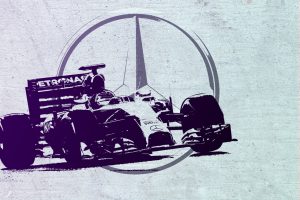Up Next

In theory there are fewer question marks hanging over Mercedes’ 2021 Formula 1 prospects than any other team on the grid.
Why should the most statistically successful team in F1 history, with the longest sequence of consecutive world titles, be more tripped up over a minor regulation change than any of the others?
It probably won’t be. But that doesn’t stop it worrying – and that fear of failure is what drives Mercedes on to serial success.
The team, which holds its 2021 launch on Tuesday, has changed ownership structure over the winter – less Daimler-Benz and a new shareholding for Ineos to make it a three-way equal split between those two and Toto Wolff – but that’s unlikely to affect how it operates.
If anything it’s made Mercedes’ long term F1 presence more robust as it’s less reliant on an automotive giant’s plans.
Will the tenor of the place be changed given the uncertainty of Lewis Hamilton’s role there beyond this season? We understand that it was his stipulation to sign only for one year because he wanted flexibility in his plans beyond.
All great eras come to an end some day. Is this the first sign of that?
Hamilton’s going into the season attempting what no one has ever done before, that eighth title. If it’s achieved, does he sign off? Will that be the punctuation point for others at Mercedes that have been on that journey with him to review their plans? How will that impact upon the strength of the team heading into the big regulation change of 2022?
But for this season specifically, where are the question marks?
Mercedes has to find improvements within a new cost-capped structure, but then so does its major competition.
What was by some margin the best power unit last year will have been tweaked further in the expectation of significant gains by the others, notably Ferrari and Honda. It feels unlikely Mercedes will have come up short, but might the gap narrow?
The reduction in floor plan area and other restrictions around the back of the car have been speculated as probably good news for Mercedes’ low-rake aerodynamic philosophy.
That theory posits that high-rake relies heavily on working the diffuser and the pieces around it extra hard – and now that those pieces have been restricted it will take more of a hit than a low-rake car.

But there is a conflicting theory. Which is that the reduced floor area at the back will inevitably move the centre of aerodynamic pressure towards the front of the car – just as Mercedes, with last year’s W11, had finally been able to give Hamilton the sort of aggressive early rotation into slow corners that he’s been asking for since at least 2017.
This had been achieved by moving the centre of aero pressure rearwards, allowing an aggressive turn in without the rear getting upset. Now, the regulations are moving it towards the front again! It will be fascinating to see where Mercedes has spent its two 2021 development tokens.
So questions and uncertainties at Mercedes just as at anywhere else. Its 2020 advantage was amplified greatly over the previous two seasons as Ferrari and Red Bull were simultaneously hobbled by technical directives and problems with a new aero concept respectively. So both those teams would seem to have far more headroom to improve than Mercedes and we might therefore expect any Mercedes superiority to be reduced.
But this is Mercedes, so even that isn’t a given.





